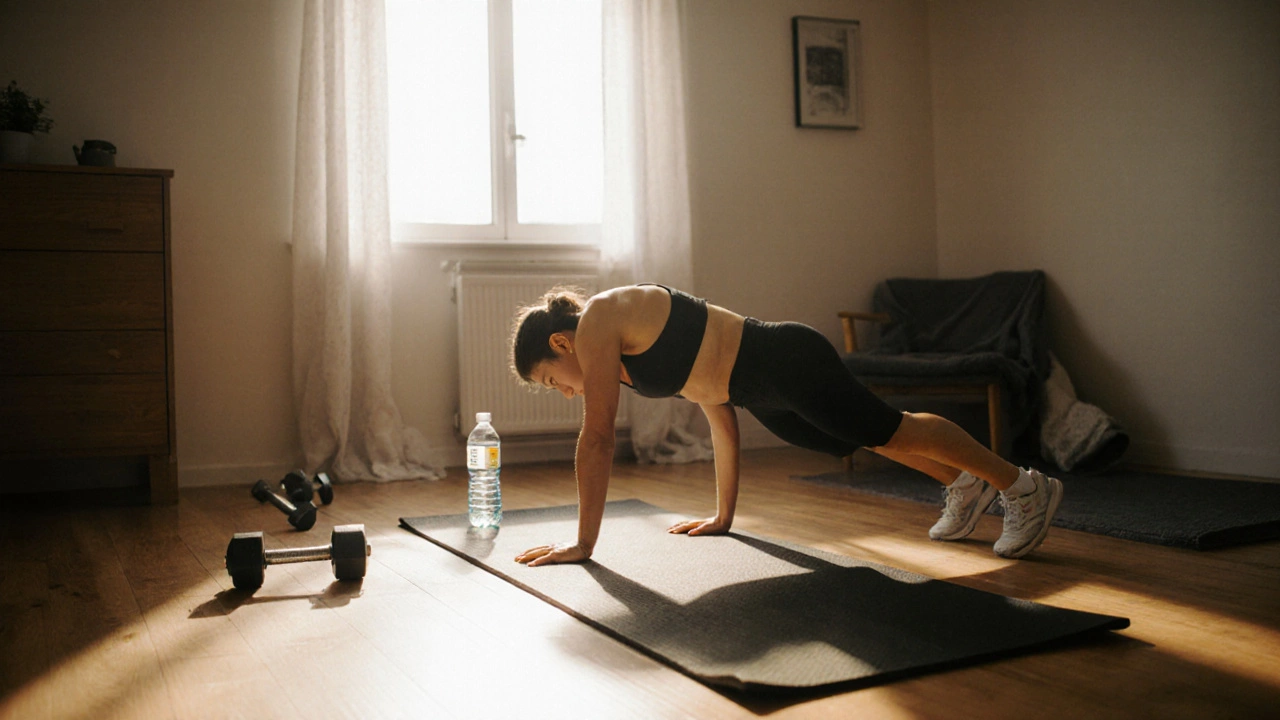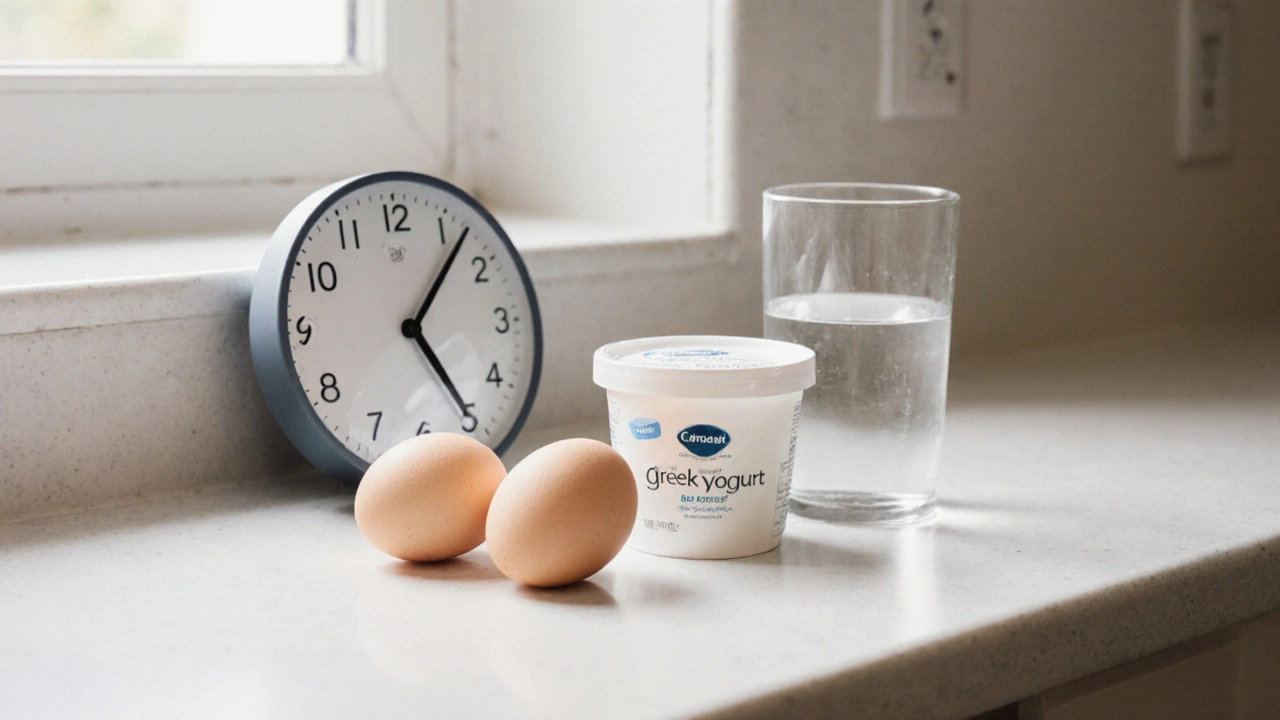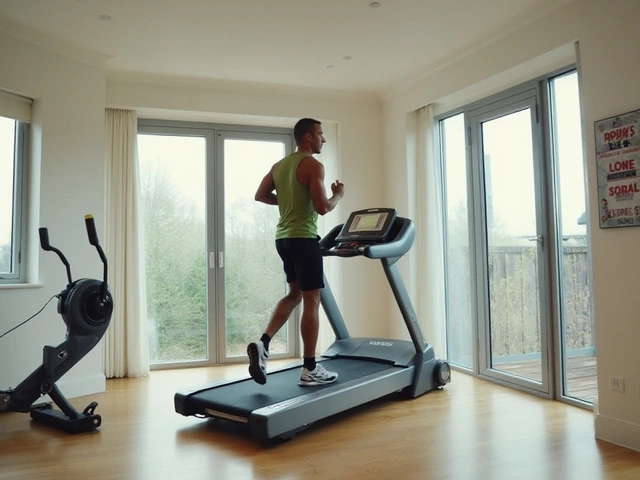Protein Calculator for 30-30-30 Workout
Calculate Your Post-Workout Protein Need
Find your ideal protein amount for the 30-30-30 workout based on your weight and activity level.
Your Recommended Protein Amount
For the 30-30-30 workout, you should consume:
within 30 minutes after your workout.
Food Examples:
2 large eggs 1 cup Greek yogurt 120g chicken breast 1 scoop whey proteinTime Remaining for Protein Intake
The 30-30-30 workout isn’t some high-tech app or expensive gym program. It’s a plain, no-fluff routine that’s been helping people lose fat and keep it off for years. You don’t need equipment. You don’t need a trainer. You just need 90 minutes - and the will to show up.
What exactly is the 30-30-30 workout?
The 30-30-30 workout breaks down like this: 30 minutes of low-intensity cardio, followed by 30 minutes of strength training, then 30 grams of protein within 30 minutes after finishing. That’s it. No fancy names. No magic pills. Just three simple steps done in order, every morning.
This routine was popularized by fitness coach Jeff Nippard after he saw clients struggling with inconsistent results. He noticed that people who did cardio alone burned calories during the workout - but regained fat when they ate poorly afterward. Those who lifted weights but skipped protein didn’t rebuild muscle. The 30-30-30 fixes both problems at once.
Why it works: The science behind the numbers
Let’s break down why each 30 matters.
First 30: Low-intensity cardio - Think brisk walking, a slow bike ride, or an elliptical at a pace where you can still talk. This isn’t about burning the most calories in the shortest time. It’s about tapping into fat stores. At low intensity, your body uses fat as its main fuel. High-intensity workouts burn mostly carbs. If you’re trying to lose body fat, this is the smarter start.
Studies from the Journal of Sports Sciences show that steady-state cardio in the morning, especially before eating, increases fat oxidation by up to 20% compared to doing it later in the day. Your body’s insulin levels are low after sleep, so it’s primed to burn fat.
Second 30: Strength training - This isn’t about lifting heavy. It’s about activating muscle. Do bodyweight moves like squats, push-ups, lunges, and planks. Or use dumbbells if you have them. Three sets of 10-12 reps per move is enough. The goal isn’t to exhaust yourself. It’s to signal your body: "Keep this muscle. Don’t break it down."
When you lift, you create tiny tears in your muscle fibers. Your body repairs them overnight - and that repair process burns extra calories for up to 48 hours after. This is called EPOC: excess post-exercise oxygen consumption. It’s the reason people who lift weights lose fat faster than those who only run.
Third 30: 30 grams of protein - This is where most people fail. You finish your workout. You’re hungry. You grab a bagel. Or a banana. Or nothing at all. That’s a mistake. Protein tells your body: "Use this to rebuild muscle, not to store fat."
30 grams is the sweet spot. Research from the International Journal of Sport Nutrition and Exercise Metabolism shows that 20-40 grams of protein post-workout maximizes muscle protein synthesis. Less than 20? Not enough. More than 40? Your body can’t use the extra. It just turns it into energy or stores it.
Good options: two large eggs + one cup of Greek yogurt. Or a scoop of whey protein mixed with water. Or 120 grams of chicken breast. You don’t need fancy shakes. Just get the protein in.
Who this routine is for (and who it’s not)
The 30-30-30 workout is perfect for:
- People who’ve tried diets but keep regaining weight
- Those who hate long gym sessions
- Anyone with a busy schedule who wants one simple habit
- People over 40 trying to hold onto muscle while losing fat
- Beginners who feel overwhelmed by complex programs
It’s NOT ideal if:
- You’re training for a marathon - you’ll need more endurance work
- You’re trying to build serious muscle mass - you’ll need heavier lifting and more calories
- You have joint issues and can’t walk briskly or do bodyweight squats
If you’re new to exercise, start slow. Do 20 minutes of walking, 20 minutes of bodyweight moves, and 20 grams of protein. Build up over two weeks. Don’t rush.

What to do on rest days
You don’t need to do this every single day. Three to four times a week is enough. On off days, move your body - but don’t force it. Walk around the block. Stretch. Take the stairs. Your body needs recovery to burn fat and build muscle.
Some people do light yoga or a 15-minute mobility routine on rest days. That’s fine. Just don’t turn rest days into guilt trips. Rest is part of the plan.
Real results: What people actually experience
One woman in Melbourne, 52, started the 30-30-30 routine in January 2025. She had tried keto, intermittent fasting, and spin classes. Nothing stuck. She did this routine four mornings a week, ate normally the rest of the time, and didn’t count calories. In 12 weeks, she lost 8.5 kilograms of fat, kept her muscle, and stopped feeling tired all the time.
A 38-year-old dad in Sydney did the same thing. He lost 6 kilograms, gained strength, and started sleeping better. He says: "I used to feel like I was fighting my body. Now I feel like I’m working with it."
These aren’t outliers. They’re people who stopped chasing trends and started doing one simple thing consistently.

Common mistakes and how to fix them
Most people fail at one of these three points:
- Skipping the cardio - They think, "I’ll just lift." But without the low-intensity fat-burning phase, they miss the metabolic advantage.
- Doing high-intensity cardio - Running sprints or HIIT before strength work burns through glycogen. You’ll feel weak during lifting. Stick to steady pace.
- Waiting too long for protein - If you wait an hour or eat carbs first, your body starts storing fat again. Have protein within 30 minutes. Set a timer if you have to.
Another mistake: thinking you need to eat less. You don’t. You just need to eat better after the workout. Many people drop calories and end up losing muscle - which slows metabolism. The 30-30-30 helps you lose fat without starving.
How to start tomorrow
Here’s your simple plan:
- Wake up. Drink a glass of water.
- Go for a 30-minute brisk walk - outside if you can. Fresh air helps.
- Do 30 minutes of bodyweight strength: 3 rounds of 10 squats, 10 push-ups (knees or wall if needed), 10 lunges per leg, 30-second plank.
- Within 30 minutes, eat 30 grams of protein. Eggs, yogurt, chicken, or a shake.
- Repeat 3-4 times a week. Don’t worry about the other days.
That’s it. No app. No subscription. No complicated tracking. Just three 30s.
Why this beats trendy workouts
Most fitness trends promise quick results. They’re loud. They’re flashy. They’re gone in six months.
The 30-30-30 doesn’t promise miracles. It promises consistency. It doesn’t require you to change your life - just your morning. And over time, that small habit stacks up. Muscle builds. Fat melts. Energy grows. Confidence follows.
You don’t need to be perfect. You just need to show up. Three times a week. For 90 minutes. That’s less time than you spend scrolling on your phone.
Start tomorrow. Not Monday. Not next week. Tomorrow.
Can I do the 30-30-30 workout in the evening?
You can, but it’s less effective. Morning cardio on an empty stomach burns more fat. Doing it late at night might interfere with sleep for some people. If you can only do it in the evening, go ahead - but try to finish at least 2 hours before bed.
Do I need to eat breakfast after the 30-30-30?
You don’t need a full breakfast. Just get that 30 grams of protein. After that, eat normally. If you’re hungry later, have a balanced meal with veggies and healthy fats. Don’t overeat just because you worked out.
Is the 30-30-30 workout good for weight loss?
Yes - if you stick with it. It’s not a magic bullet, but it’s one of the most effective routines for steady fat loss without muscle loss. People who do it consistently for 8-12 weeks usually lose 4-10 kilograms of fat, depending on their starting point.
Can I do this if I’m over 50?
Absolutely. In fact, people over 50 benefit the most. Muscle loss accelerates after 40. This routine helps you keep muscle while burning fat - which keeps your metabolism active and reduces injury risk. Start with lighter movements and build up slowly.
What if I can’t do 30 minutes of cardio?
Break it into smaller chunks. Do two 15-minute walks. Or walk for 10 minutes, rest for 5, then walk another 15. The goal is total time, not continuous effort. Even 20 minutes of walking helps. Progress, not perfection.





